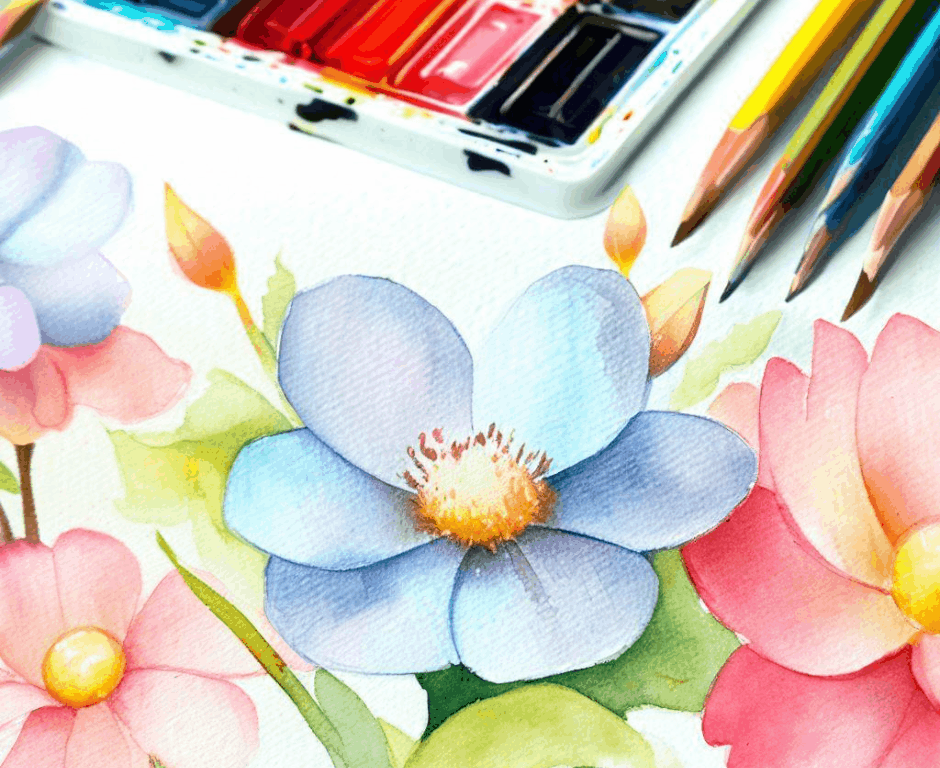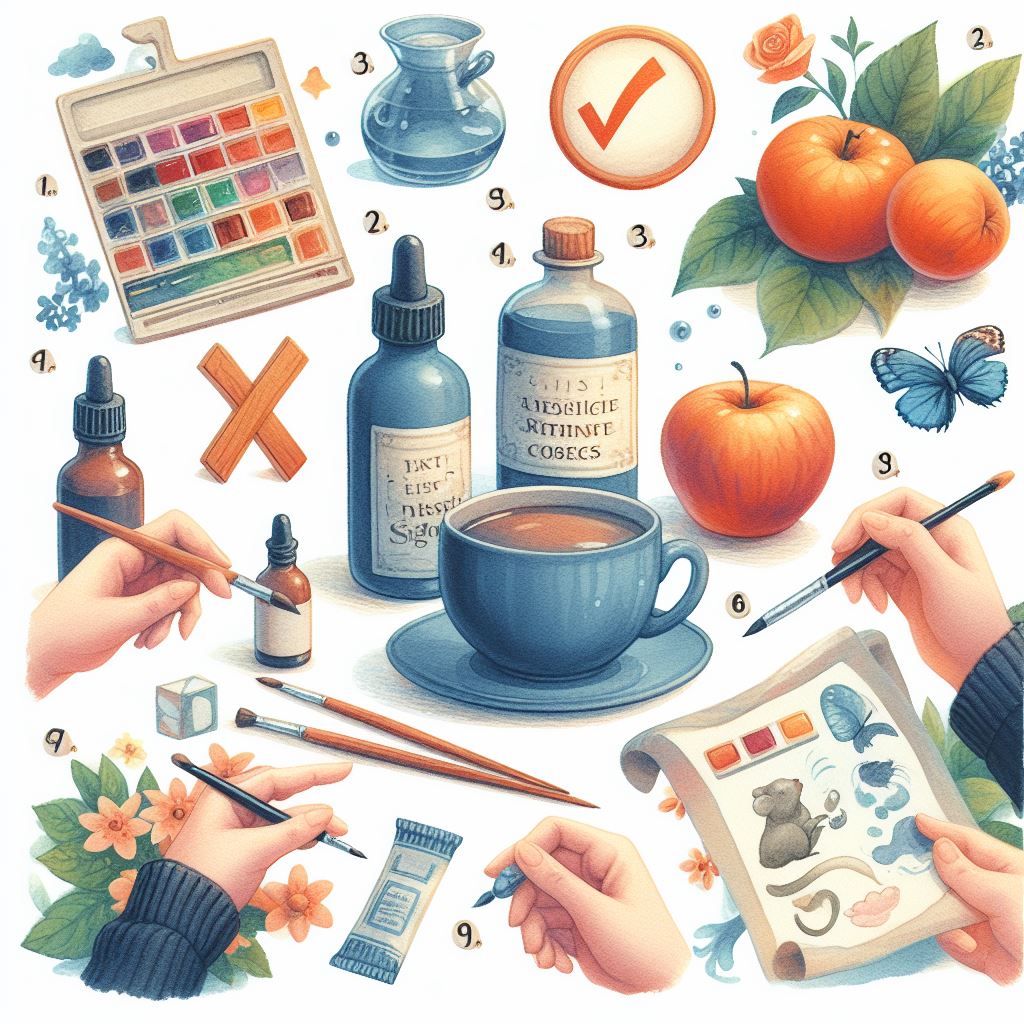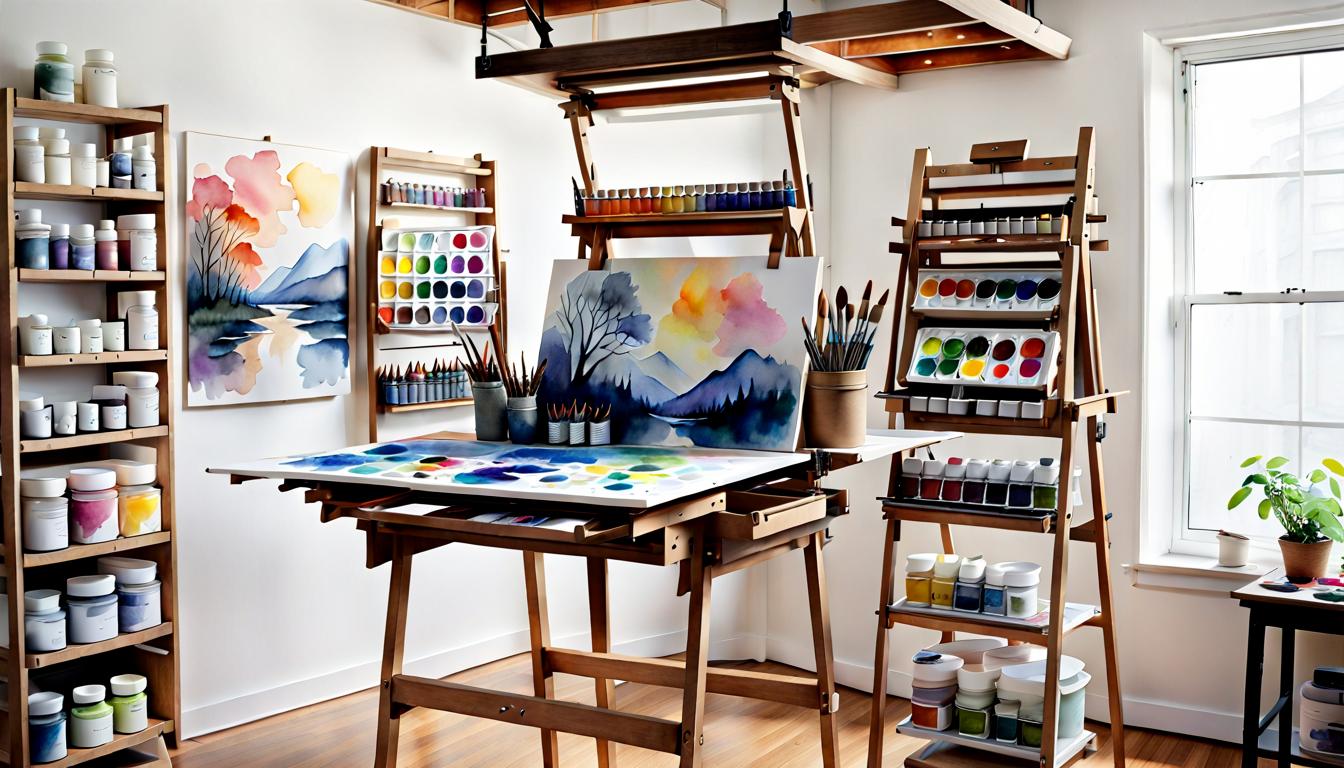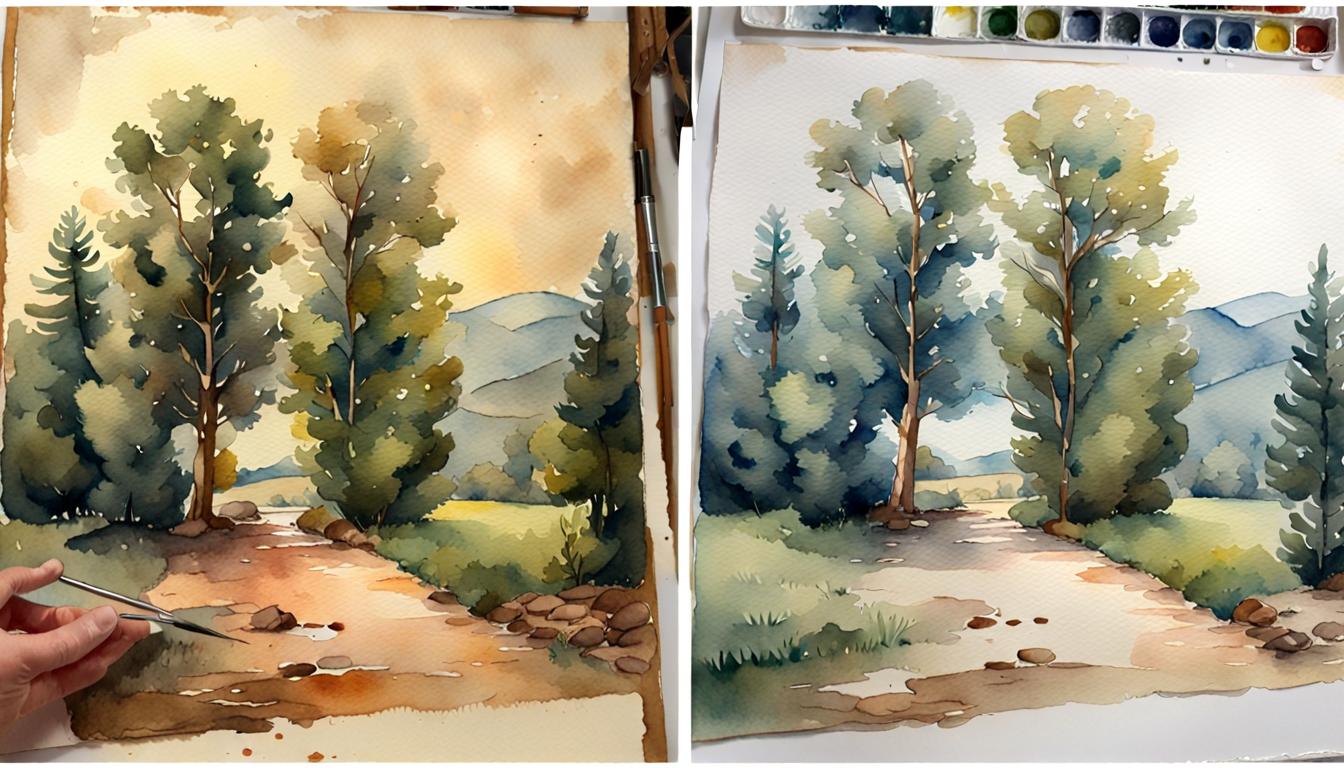
Watercolor pencils are a versatile and exciting medium that combines the best of both worlds: drawing and painting. Using watercolor pencils: they offer a unique way to create beautiful, vibrant artwork with the control of a pencil and the fluidity of watercolor paint. In this article, we will explore various tips and tricks for blending colors with watercolor pencils to help you create stunning, professional-looking art.
Using Watercolor Pencils – Blending
1. Keep color theory in mind
When blending colors, it’s essential to consider color theory. Analogous colors, which are colors that are next to each other on the color wheel, tend to blend together better. Experiment with different color combinations to find the perfect blend for your artwork.
2. Use scrap paper for swatching
While working, keep scrap paper handy for swatching colors. This will help you test out different color combinations and blending techniques before applying them to your final piece.
3. Apply light pressure for smoother blending
Coloring lightly can help reduce visible lines and create smoother blends. Using better-quality pencils can also improve the blending process.
4. Layer colors for depth and intensity
Layering colors can add depth and intensity to your artwork. Apply one color, then layer a second color over the top or right next to the first color. Activate the area with water to mix the colors. Allow the first layer to dry completely before adding additional layers for more depth and color mixing.
5. Experiment with different blending techniques
There are several techniques for blending watercolor pencils:
- Draw on dry paper and activate with water: Apply color to dry paper and then use a wet brush to blend the colors.
- Draw on wet paper: Apply color to wet paper for a more fluid, painterly effect.
- Dip pencils into water: Dip the sharpened tip of your watercolor pencil into water and draw with it for a more vibrant, intense color.
- Create a palette on a separate piece of paper: Draw swatches on a separate paper, wet a brush, and dab the swatch to pick up the color. Paint it onto your artwork like regular watercolor paint for soft, delicate washes.
6. Use quality materials
Invest in quality watercolor pencils and paper for the best results. High-quality materials will provide better color payoff, smoother blending, and improved overall performance.
7. Protect your highlights and lightest values
When working with watercolor pencils, it’s essential to protect the highlights and lightest values in your artwork. Plan your composition and color placement carefully to ensure that these areas remain bright and vibrant.
how to choose the right paper for Blending with watercolor pencils
Choosing the right paper for watercolor pencils is crucial for achieving the best results in your artwork. The ideal paper should be strong enough to handle water without buckling or tearing. Here are some factors to consider when selecting the right paper for using watercolor pencils:
- Material: Watercolor papers are generally made from either cotton or wood pulp. 100% cotton papers are of professional quality and offer the best painting surface, providing stability and longevity to your artwork.
- Surface Type: Watercolor papers come in three surface types: Hot Pressed (HP), Cold Pressed (NOT), and Rough. Hot Pressed paper has a smooth surface, while Cold Pressed and Rough papers have more texture. The choice of surface type depends on your personal preference and the desired effect in your artwork.
- Weight: The paper’s weight is essential when working with watercolor pencils, as it determines how well the paper can handle water. Look for heavyweight paper with at least 300 gsm or 140 lb. This will prevent the paper from warping or buckling when water is applied.
Some popular high-quality watercolor papers suitable for watercolor pencils include:
- Arches Watercolor Paper
- Fabriano Artistico Extra White Watercolor Paper
- Strathmore 300 Series Bristol
Remember that investing in quality materials will significantly impact the final result of your artwork. Experiment with different papers to find the one that best suits your style and technique.
how to fix mistakes when blending Colors with watercolor pencils
Mistakes can happen when using watercolor pencils but don’t worry, there are several ways to fix them and improve your artwork. Here are some tips to help you correct mistakes when blending watercolor pencils:

1. Lift the color
If you’ve made a mistake while the paint is still wet, you can use a clean, damp brush or a paper towel to gently lift the color from the paper. Be careful not to rub too hard, as this can damage the paper.
2. Wait for the paint to dry
If the mistake is more noticeable after the paint has dried, you can try using a kneaded eraser or a sand eraser to gently remove the unwanted color. Be cautious when using these tools, as they can also damage the paper if used too aggressively.
3. Add layers
In some cases, you can fix mistakes by layering more color on top of the problematic area4. This can help to cover up the mistake and create a more seamless blend. However, be mindful not to overwork the paper, as this can lead to muddy colors and a less vibrant result.
4. Use a wet brush
Another technique to fix mistakes is to use a wet brush to soften hard edges or blend colors more effectively. Gently brush the wet brush over the mistake to help blend the colors and create a smoother transition.
5. Combine with other media
If the mistake is difficult to fix with watercolor pencils alone, you can try combining your watercolor pencil artwork with other media, such as gouache paint or colored pencils. This can help to cover up the mistake and add more depth and interest to your artwork.
6. Embrace the mistake
Sometimes, the best way to fix a mistake is to embrace it and incorporate it into your artwork. This can lead to unique and unexpected results that can enhance your piece. Remember, art is a process of exploration and learning, and mistakes can often lead to new discoveries and techniques.
In conclusion, blending colors with watercolor pencils can be a fun and rewarding process. By keeping color theory in mind, experimenting with different blending techniques, and using quality materials, you can create stunning, professional-looking artwork. So, grab your watercolor pencils and start exploring the endless possibilities of this versatile medium!


